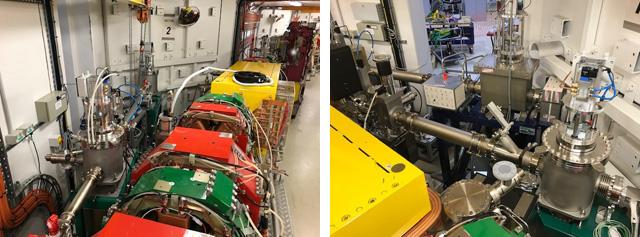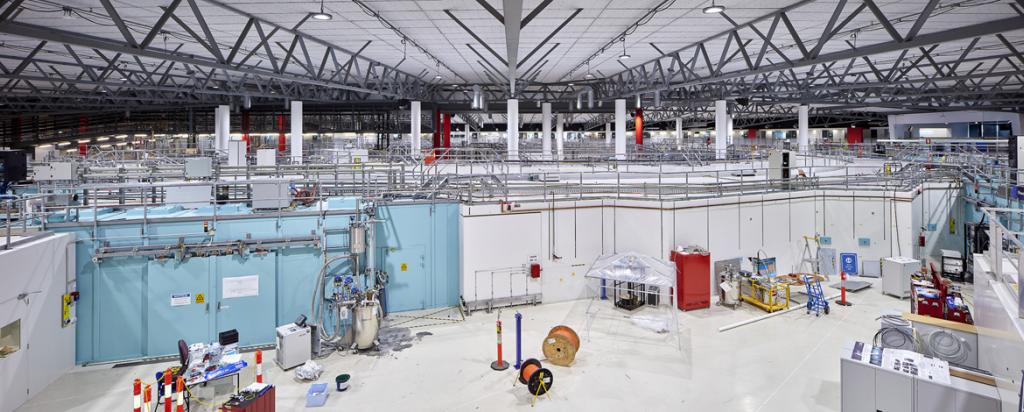

Published on the 16th October 2019 by ANSTO Staff
Good progress has been made on the installation of supporting infrastructure for the first of the new beamlines for the Australian Synchrotron as part of Bright Project.
The work is a series of complex engineering tasks that require precise planning, the expertise of applied mechanical engineering, controls engineering and supporting technicians.
Importantly, the majority of installation works could only be done during periods when the synchrotron was not operational.

Frontend of BioSAX (left) and frontend of MEX (right) which were installed inside the ring
Installation of the ‘frontends’ for two new beamlines, Medium Energy X-ray Absorption Spectroscopy (MEX) and Biological Small Angle X-ray Scattering (BioSAX) is now complete with final commissioning tasks on schedule. Completion is expected during the coming Christmas shutdown, according to Senior Engineering Manager Brad Mountford.
The ‘frontend” is the physical conduit that carries powerful synchrotron light from the main storage ring through the shield wall that surrounds the ring.
It houses important components, such as the photon shutter, Bremsstrahlung shutter and vacuum isolation gate valves. The beamline begins on the outside of the shielded wall starting with the photon delivery system and ending at the endstation where the experiments are carried out.
Although the instruments are different in the way they use synchrotron light, each of the Synchrotron beamlines are constructed in a similar way— branching off the main storage ring.
“One of our new instruments, Micro Computed Tomography (MicroCT ) will utilise one of the existing front ends that was installed as a spare during the original construction phase of the facility.
“Mechanically the MEX and BioSAX frontends are nearly complete and we will finish the process during the Christmas shutdown period.
“Every component installed so far functions as it should independently. Our job now is to now ensure everything works properly as a complete system,” said Mountford.
The installation of the MEX front end involved setting up an optical system inside the storage ring wall.
“Normally beamlines have all-optical components outside the wall. For MEX to have a branch line from the same source, a mirror that splits the synchrotron beam is required to be inside the wall.
“The mirror splits part of the beam off at a different angle, so you get two beams exiting the shield wall that are diverging. The divergence ensures there is enough physical separation between the beams further down the beamline to install the endstations.
“Despite the small amount of space in which to install the optical component, everything went extremely well,” said Mountford.
Mountford said two mechanical technicians carried out the difficult work of the installation. The German company that built the frontends sent a supervisor and two technicians to assist with the installation.
In preparation for the installation, an electrical team pulled all the necessary cables into the storage ring area during the preceding shutdowns and maintenance days.
“There were no stumbling blocks. I think it came down to very good preparation by the project team over a twelve-month period and excellent work by the technicians.
“During the coming Christmas shutdown, we will get back in the storage ring to do final integration and testing. We’ll wrap up the front ends in thermal jackets and heat them to 250 degrees Celsius to ensure we achieve an ultra-high vacuum environment inside the frontends that is free of contaminants,” confirmed Mountford.
“To date, ANSTO has received $94.1 million of capital funding for Bright Project from over 30 contributors. We are greatly encouraged by this support. However, the job is far from over; we are still seeking additional funding commitments to ensure all eight additional beamlines can be constructed,” said Australian Synchrotron Director Andrew Peele.